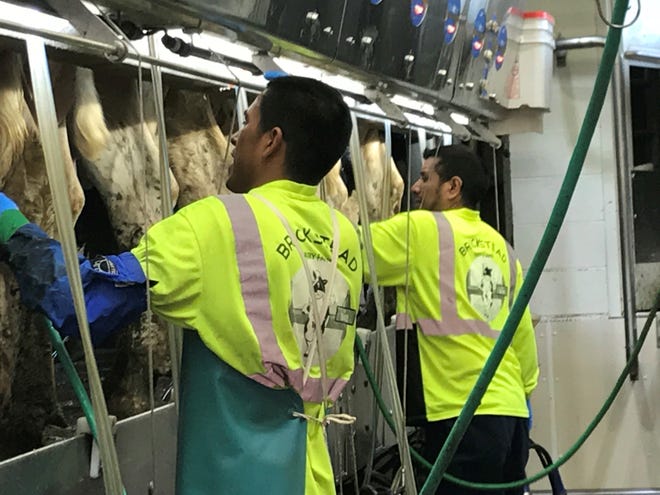Training dairy farm workers in 5-step teaching method

New employees need and want training. The importance of training programs has increased dramatically. Margins for acceptable error have decreased. Equipment has become more complicated. Farm work is complex. People with all the necessary skills and experience for success are difficult to find. Many new employees were not raised on a farm. Training is essential!
The actual training of a new employee can be aided by a five-step teaching method:
1. PREPARE the learner. Learners are prepared when they are at ease, understand why they need to learn the task, are interested in learning, have the confidence they can learn, and the trainer can teach.
The most important part of learner preparation is creating a need to know or desire to learn. Prepare the learner by:
- Showing enthusiasm for the task.
- Relating the task to what the learner already knows.
- Helping the learner envision being an expert in the task.
- Adding fun and prestige to the task.
- Associating the task with respected coworkers.
2. TELL the learner about each step or part of the task.
3. SHOW the learner how to do each step. In demonstrating the task, explain each step emphasizing, the key points and more difficult steps. Remember the little and seemingly simple parts of the task. Get the learner involved by asking questions about what is being shown.
4. Have the learner DO each step of the task while being observed by the trainer. Ask the learner to explain each step as it is performed. If steps or parts of the task are omitted, re-explain the steps and have the learner repeat them.
5. REVIEW each step or part of the task with the learner, offering encouragement, constructive criticism, and additional pointers on how to do the job. Be frank and honest in the appraisal.
These five steps work. They help create an ideal learning situation based on the following guidelines and assumptions:
- All employees can learn.
- Trainers should make learning an active process.
- Learners need and want guidance and direction.
- Learning should be step-by-step.
- Learners need time to practice.
- Learning should be varied to avoid boredom.
- Learners gain satisfaction from their learning.
- Trainers should encourage and reinforce learner progress.
- Learning does not occur at a steady rate, i.e. plateaus follow spurts of progress.
Improved training offers dairy farm managers a way to increase employee job satisfaction and progress. Deciding what can be accomplished through better training is a good starting point. Creating a positive environment for learning helps both the trainer and the employees. Preparing before jumping in avoids confusion and frustration.
Adapted from the Buckeye Dairy News